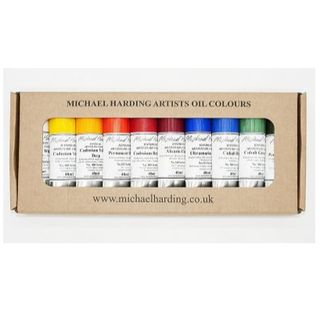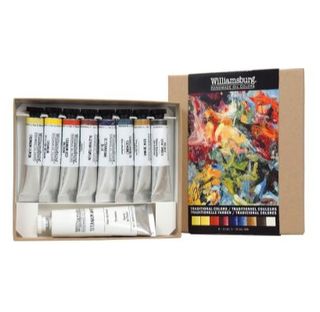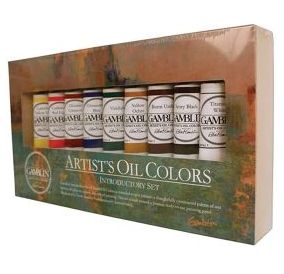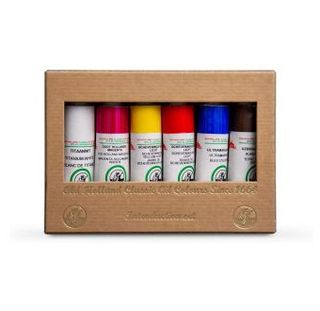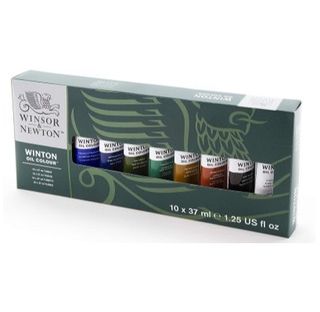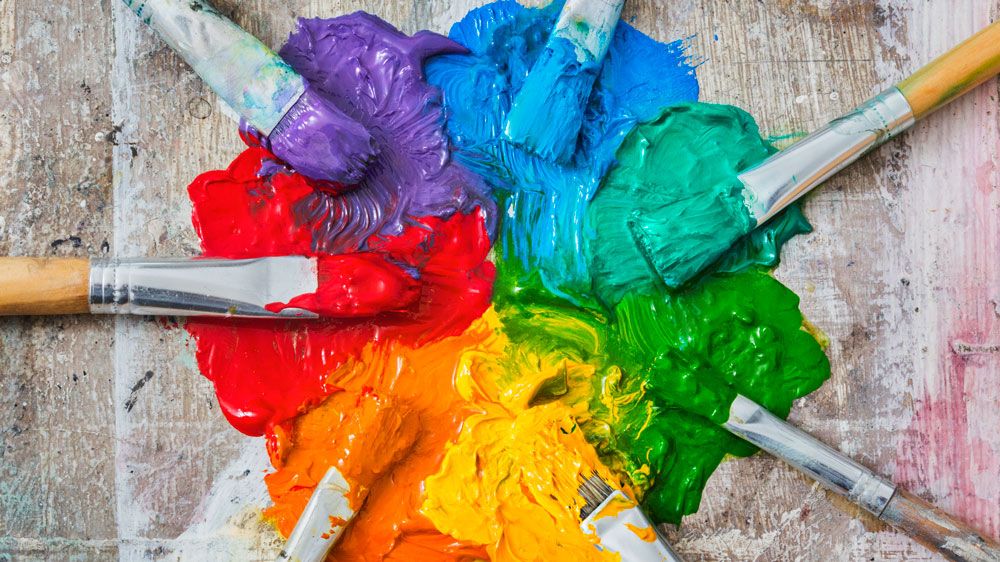The best oil paints might cost a little more, but you’ll almost certainly get a return on your investment. After all, it’s no secret the quality of an artist’s tools can significantly impact their work. And so for oil painters, selecting the right product is crucial to realising your creative vision.
To help you find the right ones, we’ve whittled down the hundreds of oil paints on the market to short list of the absolute best. We’ve considered factors such as pigment quality, oil composition, additives, and colour range to make our selection of the finest oil paints available today .
To complete your art kit, check out our guide to the best art easels too. And you might also take a look at our picks of the best oil paint supplies and the best canvas for oils. Then, once you’re stocked up, check out these essential painting techniques and start practising!
The best oil paints
01. Michael Harding Oil Paint
The best oil paint to balance high quality with cost
+ High quality
+ No fillers
– Smaller range
– Pricey
The richness and texture make these paints a delight, and the consistency flows well. While the feel varies slightly between colours, with some ‘stiffer’ browns, this is standard in highly pigmented paints. The colour range is smaller than some but has the most useful pigments and a variety of whites.
02. Williamsburg Oil Traditional Colors Set
The best oil paint for a wide variety of quality earth colours
+ Excellent range
+ Unique colours
+ Good consistency
– Pricey
– Small tubes
– Texture varies
Boasting a large range of professional-grade oil paints, Williamsburg offers an excellent selection of unique earth colours. The texture can vary, but is generally rich and smooth, sometimes with a slight, gritty bite. Colours are intense and high-coverage, and the quality and light-fastness of the pigment is excellent.
03. Gamblin Artist Oil Colors Introductory Set
The best oil paint for high quality with ethical standards
+ High quality
+ Eco-friendly
– Variable consistency
Gamblin’s paints include traditional and modern colours, plus convenience mixtures. These can have a variable consistency, which is normal in high-quality paints, but earths can be particularly ‘stiff’ and matte. Gamblin is particularly conscious of high health and environmental standards, and recycles pigment from its filtration systems to reduce pollution.
04. Old Holland Oil Paint Intro Set
The best oil paint based on overall quality and pigment content
+ High quality
+ Large range
– Very expensive
– Variable quality
– Cheaper pigments
Old Holland produces intense, high-quality oil paint spanning a wide range of colours and convenience mixtures with artist-quality pigments, but there are a few containing cheaper pigments. These paints feel pleasantly dense but tend to need extra medium to flow smoothly. Consequently, they go a long way with good coverage.
05. Winsor & Newton Winton Oil Paint Set
The best oil paint range for students and beginners
+ Good quality
+ High permanence
– Cheaper pigments
– Smaller range
Winton is an excellent starting point for trying out oil paints. For a student range, the quality of paint is good, with reasonably good colour and consistent texture, but it’s a relatively small selection. The pigments in this range have a high permanence as well, so your paintings will last.
FAQs
What brands are considered reputable for oil paints?
Top quality oil paint brands include Winsor & Newton, Michael Harding, Gamblin, Old Holland, Sennelier, and Williamsburg. These brands are known for their high pigment concentration, consistency and colour brilliance.
What consistency should oil paints be?
The consistency depends on your painting style and technique. If you prefer thin layers, choose paints with a more fluid consistency. For impasto techniques, opt for stiffer paints. Many artists use a mix of consistencies, thinning paints with mediums as needed.
How do student-grade and pro-grade oil paints differ?
On the whole, professional-grade paints have higher pigment concentration, better lightfastness, and purer ingredients. That means that in practice they offer more vibrant colours and better permanence. Student-grade paints are less expensive but may contain fillers and have lower pigment loads, resulting in less intense colours.
How to choose the best oil paints
To find the best oil paints for your needs, there are several factors to consider. First, decide between student-grade and professional-grade paints. While student-grade is more affordable, professional-grade offers higher pigment concentration and better permanence. Secondly, consider the pigment quality. Look for paints with single pigments rather than mixtures, as they produce cleaner colors when mixed. Check the lightfastness rating, which indicates how well the color resists fading over time.
Thirdly, evaluate the paint’s consistency. Some artists prefer a stiffer paint for impasto techniques, while others like a more fluid consistency for glazing. Many brands offer a range of consistencies. Fourthly consider your color palette. Start with essential colors and gradually expand. Some brands offer starter sets that can be a good introduction.
Price is a factor, but remember that higher-quality paints often go further due to their pigment concentration. Balance your budget with the quality you need. Finally, consider any health concerns. Some pigments can be toxic, so check labels and opt for safer alternatives if needed. Experimenting with different brands and types will ultimately help you find the paints that best suit your style and needs.
How we test the best oil paints
Testing oil paints involves several key aspects. Colour intensity is evaluated by comparing the paint’s hue and saturation to a standard. Lightfastness is assessed through accelerated ageing tests, exposing samples to intense light over time. Consistency and texture are examined for smoothness and workability.
Drying time is measured under controlled conditions. Adhesion tests check how well the paint bonds to various surfaces. Yellowing tendencies are observed over time. Pigment concentration is analyzed to ensure proper ratios.
Chemical composition is tested for purity and to identify any harmful substances. Mixing behaviour with other colors and mediums is evaluated. Finally, real-world application tests are conducted by artists to assess overall performance and handling characteristics.

